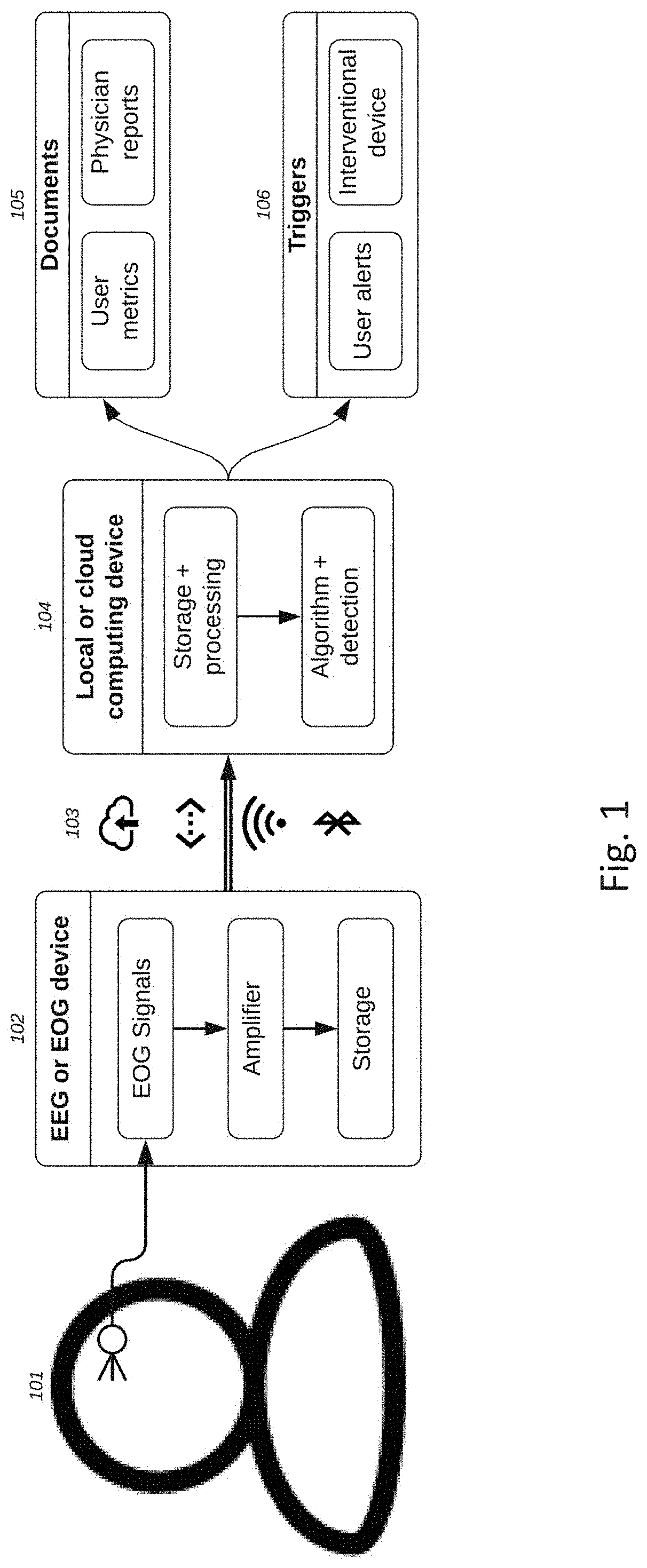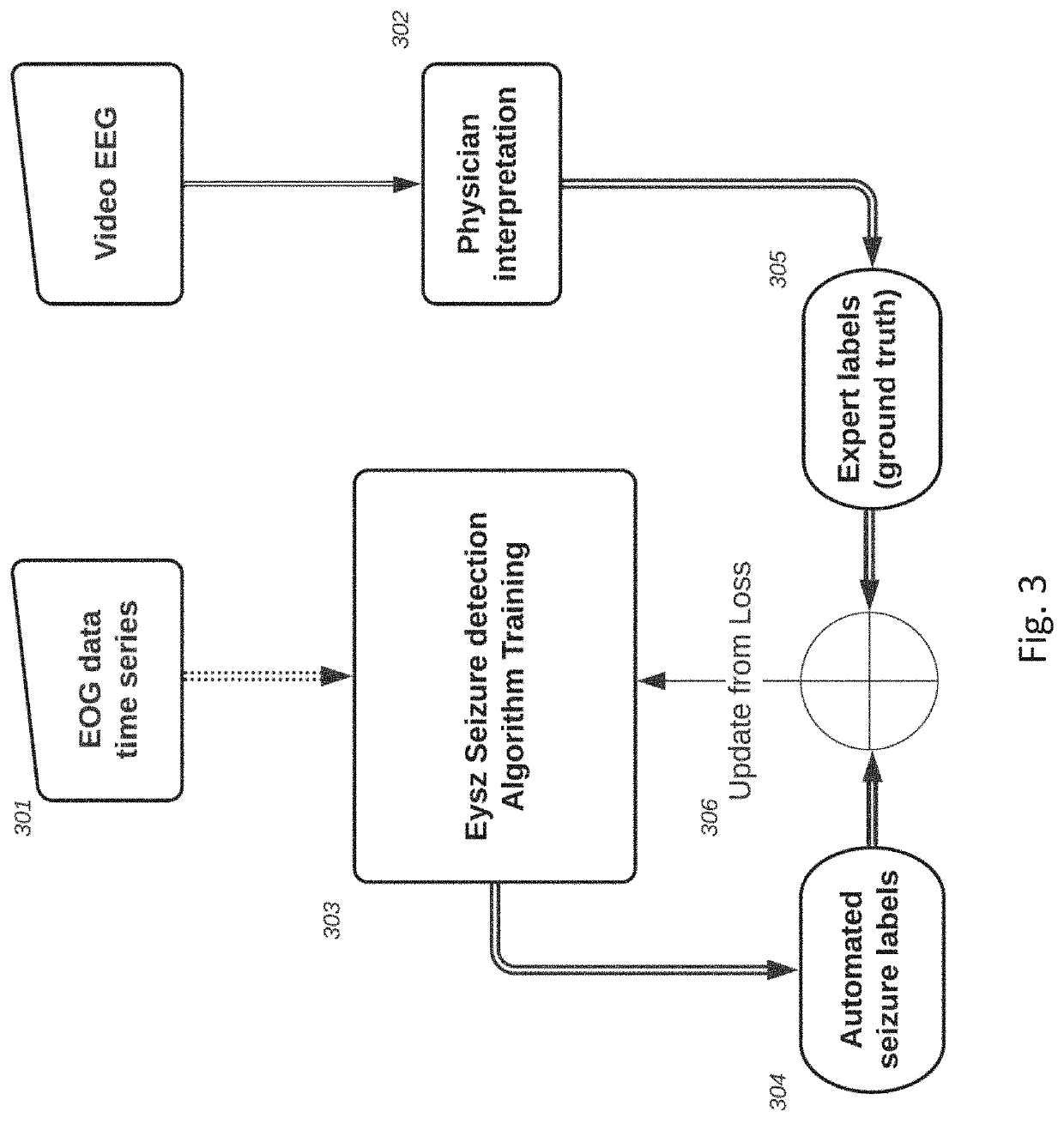Seizure detection via electrooculography (EOG)
a technology of electrooculography and seizure, applied in the field of seizure detection via electrooculography, can solve the problem that the electrooculogram cannot distinguish if a person has lost consciousness
- Summary
- Abstract
- Description
- Claims
- Application Information
AI Technical Summary
Benefits of technology
Problems solved by technology
Method used
Image
Examples
Embodiment Construction
[0017]Electrooculography (EOG) is a method of measuring the electrical activity of the eye derived from the corneo-retinal standing potential that exists between the front and the back of the human eye, the extraocular muscles and eyelid through one or more electrodes placed near the eye.
[0018]With reference to FIG. 1, EOG signals representing relative eye movement of an individual subject [101] can be obtained from a variety of methods or devices such as a mobile device, a wearable, or stationary EEG systems and / or EOG specific systems [102]. The electrodes may be incorporated into a head-worn eye-glass form factor, or other wearable device, or separate electrodes placed around the eye of the subject [101]. An example of a wearable form factor is the Jins MEME device, with a triple-electrode sensor placed between the eyes above the nose bridge. This configuration allows signal differencing to emphasize the EOG component of the electrical recordings and suppress other artifacts, suc...
PUM
 Login to View More
Login to View More Abstract
Description
Claims
Application Information
 Login to View More
Login to View More - R&D
- Intellectual Property
- Life Sciences
- Materials
- Tech Scout
- Unparalleled Data Quality
- Higher Quality Content
- 60% Fewer Hallucinations
Browse by: Latest US Patents, China's latest patents, Technical Efficacy Thesaurus, Application Domain, Technology Topic, Popular Technical Reports.
© 2025 PatSnap. All rights reserved.Legal|Privacy policy|Modern Slavery Act Transparency Statement|Sitemap|About US| Contact US: help@patsnap.com



